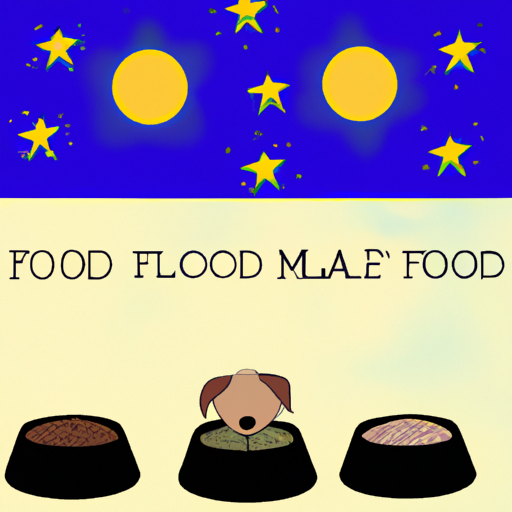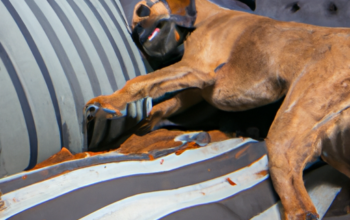Feeding your puppy is a bit like walking a tightrope. You’ve got to balance their nutritional needs with the right portion size, while also keeping in mind the breed’s specific requirements. It’s not simply about filling their bowl and letting them chow down. Instead, it involves careful planning and understanding of what your furry friend requires for optimum growth and health.
In this article, we’ll help you navigate these waters by discussing how often you should feed your puppy based on different factors such as age, size, and breed. We’ll also provide tips for transitioning to adult dog food when the time comes.
With evidence-based information at your fingertips, you’ll be well-equipped to make informed decisions about feeding routines that will serve your pup in the best possible way. So buckle up; let’s embark on this journey of nourishing your little one for a healthy life ahead!
Understanding Your Puppy’s Nutritional Needs
It’s crucial to grasp your puppy’s nutritional needs, as it not only affects their growth and development but also sets the stage for a healthy adult life. Your little furry friend requires more nutrients than an adult dog because they’re growing both in size and strength.
Also, puppies have specific dietary requirements that are different from fully grown dogs. They require high-quality protein sources for muscle development and carbohydrates for energy.
Don’t forget about fats; they’re essential for brain development, especially Omega-3 fatty acids. Vitamins and minerals play an integral role too, supporting everything from bone health to immune function.
Always remember, feeding your pup with love means providing them with nutritionally balanced meals to support their overall well-being.
Determining the Right Portion Size
Determining the right portion size can be a bit tricky, but generally, puppies require about 5% of their body weight in food per day. It’s essential to remember that this is just a rough guideline and individual needs may vary based on factors such as breed, activity level, and health status.
Consider these points when determining portion size:
-
Use your puppy’s current weight: Puppies up to five months old should eat about 5% of their body weight daily. For older puppies (6-12 months), reduce this to around 4%.
-
Monitor your puppy’s condition: If they’re losing weight or seem lethargic, increase their portions. Conversely, if they’re gaining too much weight or developing digestion issues, it might be time to cut back.
Remember: you’re serving not only food but health and happiness for your furry friend!
Establishing a Feeding Schedule
Setting a consistent feeding schedule for your little canine companion can make mealtime more enjoyable and less stressful for both of you! Puppies typically need to eat three times a day until they are about six months old. After that, twice-a-day feedings should suffice.
Here’s a general guideline you can follow:
| Age | Feeding Frequency |
|---|---|
| 8-12 weeks | 4 times per day |
| 3-6 months | 3 times per day |
| 6-12 months | 2 times per day |
Remember, these are just estimates. Each puppy is unique and may have different dietary needs depending on their size, breed, and overall health condition. Always consult with your vet to create an appropriate feeding schedule tailored to your pup’s specific needs.
The Role of Breed and Size in Feeding Frequency
Did you know your little furball’s breed and size play a significant role in their feeding frequency?
Large breeds, like Labrador Retrievers or German Shepherds, require more food than smaller ones such as Poodles or Yorkies. However, because of their rapid growth rate, larger pups need to be fed several small meals throughout the day to prevent health issues like bloating.
On the other hand, smaller breeds have faster metabolisms and can burn through nutrients quicker. So, they too benefit from multiple small meals daily to keep their energy levels up.
Remember that a balanced diet is crucial regardless of breed or size. Always consult with your vet to establish the right feeding routine for your pup’s unique needs.
Tips for Transitioning to Adult Dog Food
Making the switch to adult dog food can feel like stepping into a whole new world of pet nutrition, but here’s how you can tackle it with confidence and care.
-
Gradual Transition: Start by mixing small amounts of adult food into your puppy’s current diet, gradually increasing the quantity over one to two weeks. This will help avoid digestive discomfort.
-
Monitor Reactions: Keep an eye on your pup during this transition phase for any changes in behavior, energy level, or stool consistency as these may indicate intolerance towards the new diet.
-
Consultation: Always consult with your vet before making significant dietary changes; they can provide guidance tailored to your dog’s breed, size, and health condition.
-
Quality Matters: Choose high-quality adult food that meets nutritional standards set by AAFCO (Association of American Feed Control Officials). Their seal assures balanced nutrition for your pet’s new life stage.
By following these steps, you’re serving not just their stomachs but also their overall well-being!
Frequently Asked Questions
What should I do if my puppy refuses to eat the recommended food?”
If your pup refuses to eat the recommended food, don’t panic. Try mixing in a little of their favorite wet food for flavor. Still no luck? Consult your vet about possible health issues or dietary adjustments.
Are there any specific brands of puppy food that are more recommended than others?”
Yes, some brands are more recommended than others. Purina Pro Plan Puppy and Royal Canin Puppy are highly esteemed due to their nutritional value, ingredient quality, and breed-specific formulas. Always consult with your vet first.
How can I tell if my puppy has food allergies or intolerances?”
You’ll notice signs like excessive itching, skin rashes, vomiting, diarrhea, or swollen paws if your puppy has food allergies. If these symptoms persist after changing diets, consult a vet immediately for professional advice.
Is it okay to give my puppy treats in between meals? If so, how many?”
Yes, it’s fine to give your puppy treats between meals. They’re a great training aid. However, don’t exceed more than 10% of their daily calorie intake with treats to avoid overfeeding and obesity.
Can I feed my puppy human food, and if so, what types are safe?”
Yes, you can feed your puppy human food, but with caution. Safe options include rice, cooked chicken or turkey, and certain fruits and vegetables like carrots or apples. Avoid grapes, raisins, chocolate and onions.
Conclusion
In conclusion, understanding your pup’s nutritional needs is vital for their growth. Remember, the right portion size and a consistent feeding schedule are key.
Interestingly, larger breeds actually require less food relative to their weight than small breeds do.
Finally, transitioning to adult dog food should be done carefully. Be sure to consult with your vet throughout this process to ensure your puppy’s health and well-being.



